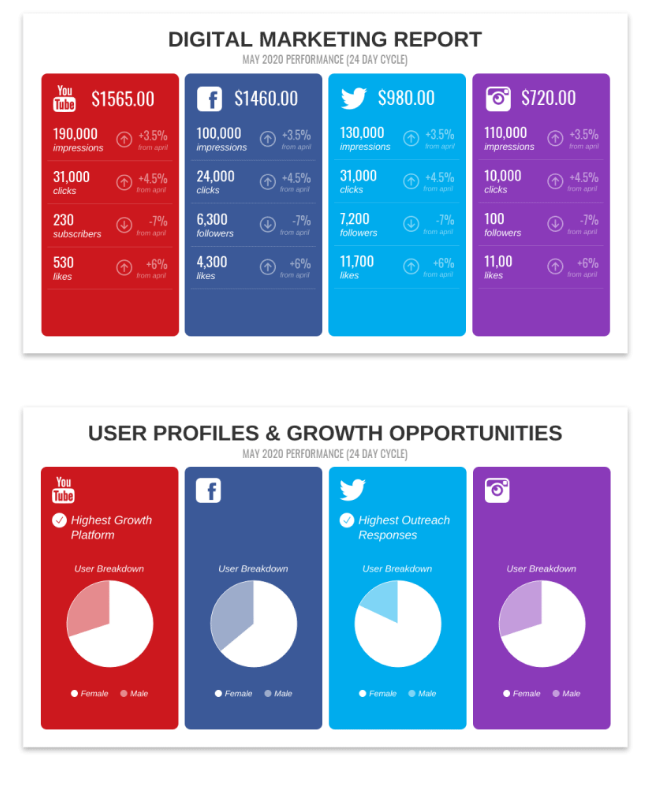
Marketing professionals can use content marketing to increase brand recognition and make their brand more prominent in the increasingly competitive world of online marketing. Prospects do not want to buy a product. Instead, they want to learn about the brand. They are looking for information about the brand and its attribution as well as solutions to problems. Marketers can increase quality traffic to their websites by using content marketing techniques that boost search engine optimization. The use of customer feedback is another powerful method to engage customers. Marketers can help potential customers by identifying their problems, and offering solutions.
7-step guide to content marketing
You must consider many factors to make a content marketing campaign successful. The success of your marketing efforts will depend on your company's context, market, as well as your customers. It is important to integrate marketing, IT, collaboration. Here are seven key tips to help you achieve content marketing success. Each of these tips will enable you to reap the full benefits of your contents. Ultimately, your success depends on how well you implement each of the tips above.
Research
Know your target audience to discover which content marketing strategies are most effective for your business. Also, know the content of your competitors. By doing this, you can find out what topics and formats your audience is most interested in. To be unique, it is important to research the topics that you will write about to make your content stand out from the rest. To help you with your research, an agency partner can be used. These tips will help you to start your research.

Creation
Your website should have content that appeals to both of these audiences. To be seen by your customers, content must appeal to both. Your content should be able meet the needs of both groups and present your brand's authority in the subject. Content creation builds trust. Customers are more likely than ever to purchase from brands they know and have seen.
Distribution
It is important to know your audience demographics before you implement a distribution plan. If you have a product or service that you want people to buy, then you need to create content that will be appealing to them. To identify your audience, you should create a buyer persona and map their journey from search to conversion. Then, you can determine the types of content that will best reach their interests. Distributing content to multiple channels will increase your reach and efficiency.
Analytics
Analytics are very useful tools in content marketing. You can then see which channels and mediums are performing best and which ones have the highest ROI. Content marketing gives your business the ability to tell its own story and build a relationship with customers. Analytics allows you to determine which pieces are performing well and which ones require more work. Let's take a look at the different ways analytics can aid you in your content-marketing efforts. Get started today!

FAQ
How can I measure success with content marketing?
There are many ways to assess the effectiveness of your content-marketing strategy.
One good measurement tool is Google Analytics. Google Analytics allows you to see the origins of your targeted traffic and which pages they most often visit.
It will also show you how long each visitor stays before leaving your site.
This information can be used by you to improve your content, get people's attention, keep them engaged longer and make it more appealing.
This is another way to determine the success rate of your content-marketing efforts.
Do my new subscribers get any value from my email newsletters or not? What proportion of my mailing list has become paying members? How many people clicked through to my landing pages? Are people who click through more likely to convert than others?
These are all important metrics you need to monitor and track over time.
Lastly, another great way to measure content marketing success is to look at the number of times people share links to your content across social networks.
Consider starting now if this is something you aren't doing. This could make the difference between being noticed and not being seen in your industry.
How do you create an effective content marketing strategy?
First, decide what type of content you want. This will help you create a content marketing plan that is effective. Next, determine who your target audience is and how they use internet. Next, determine which channels are most effective in reaching your target market. Finally, choose the right keywords for each channel and write compelling copy for each piece of content.
How do you make good content?
A good piece of content should be informative, helpful, and easy to share. The best content will have a clear call for action. This could be a link or button that allows readers sign up for a trial, read more about your product, or order something from your site. You should also include visuals in your content to make it easy to share across all media.
Is Content Marketing right for me?
Absolutely! It works for all types of businesses. Content marketing works for all types of businesses, regardless of whether you offer products or support, or offer training. Customers can learn more about your company by creating content and staying connected.
Should I hire an editor to create my Content Marketing?
No! There is no need to hire professional writers to write content for you business. There are tons of free resources out there that can help you get started.
What is Content Marketing without an Agency?
No! It is possible to create high-quality content online with a variety of tools. Agents tend to be more expensive.
Statistics
- According to the Content Marketing Institute, 70% of B2B marketers and 86% of B2C marketers surveyed use content marketing in some form or other. (criteo.com)
- Companies that use content marketing see approximately 30% higher growth rates than businesses not using it. (mailchimp.com)
- Measure your goals with a progress indicator of 0-100%. Make your goals collaborative and transparent (semrush.com)
- An example of an overarching goal could be: "In 2022, we want to achieve a 20% increase in revenue created by organic content and generate 15,000 MQLs with a budget of $30,000." (semrush.com)
- Progress indicators (0–100%) allow each team member to see how attainable each goal is and understand what remains to be accomplished. (semrush.com)
- Content marketing produces 3X more leads per dollar spent. Content marketing costs 62% less than traditional marketing. (criteo.com)
- According to research compiled by Coschedule: Companies that publish 16+ blog posts a month get as much as 3.5x as much traffic as those that publish 0-4 posts a month. (criteo.com)
- This marketing strategy landed Ford a 15.4% conversion rate. (neilpatel.com)
External Links
How To
Informationgraphic creation tips to help with content marketing
Infographics are a powerful way to simplify complicated concepts, and make information easier to understand. Use infographics as a tool to promote your content marketing message.
To create an infographic, you will need to use design software like Adobe Illustrator or Photoshop. These programs are great for creating infographics. Once you are happy with your design, you can upload images to Unsplash and Pixabay for your design.
Looking at other infographics online can help you get ideas. To show how many calories certain foods have, you can use a picture of a pyramid to illustrate this. You could also replace the numbers with images of the food. You could also look at the sugar content of soda pop, and then take a photo of a Coke bottle.
Once you've created your infographic, share it on social media channels like Facebook or Twitter. This will make it easier for people who don't know the concept to get familiar with it. Include hashtags if you plan to share your infographic via social media platforms. This will allow others to see what you're talking. You can use hashtags to allow others to follow your conversations about specific topics.
Try to make your infographic posts shorter than you normally would if you create one. A blog post may be 2000-5000 words long. An infographic requires only 500-1000 words. This means you can easily convey more information with less space.
Remember that not all viewers can read small font sizes when designing an infographic. It is important to use large fonts and avoid relying too heavily on colors when designing your infographic. Make sure all text is legible.
Here are some more tips
-
Use an infographic template. You can find many templates online or in printed formats. Canva, Piktochart or Google Slides are three of the most well-known templates.
-
Create your Infographic. To create your infographic, use the template. You can use any media that suits your audience. An example of this is a infographic that shows the best restaurants in Seattle.
-
Add text. Add text after you've created your infographic.
-
Add Images. Your infographic can also include images. These images could be photos, charts, graphs or icons. Make sure the picture is relevant to your topic before you add it.
-
Make it interactive. You can also add interactive elements such buttons, maps, links, and other features. This will engage your audience.
-
Share. Share your infographic with others on social media such as Facebook, Twitter and LinkedIn.
-
Measure. What was the performance of your infographic? Did people click through to your website? Are they signing up for your email newsletter? Was their reaction to the infographic?
-
Improve. Is there anything you can do to improve your infographic Could you do better next time?
-
Repeat. Do this again!